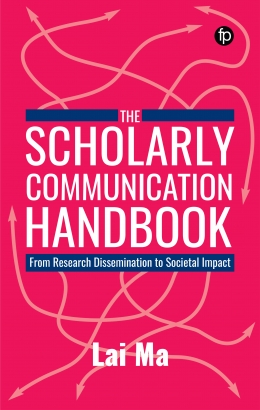
Primary tabs
You don't need to be an ALA Member to purchase from the ALA Store, but you'll be asked to create an online account/profile during checkout to proceed. This Web Account is for both Members and non-Members. Note that your ALA Member discount will be applied at the final step of the checkout process.
If you are Tax-Exempt, please verify that your account is currently set up as exempt before placing your order, as our new fulfillment center will need current documentation. Learn how to verify here.
- Description
- Table of Contents
- About the author
- Reviews
This is a complete guide exploring how to evaluate the best place to publish academic research today.
Scholarly communication covers a broad range of topics and issues, and advances in online platforms and tools for research support have led to unprecedented changes in publishing options, research assessments, and research policies. As a result, researchers are facing a transformed scholarly communication landscape, making research dissemination and societal impact a complex topic. Guided by the question "Where to publish?" this handbook explores publication types, open access (OA), and licensing options, as well as appropriate uses of research metrics and the benefits and setbacks of peer review. It answers questions such as:
- What are the key considerations for exploring new publication venues and experimenting with new forms of publishing?
- Why are research metrics and open research important topics in scholarly communication?
- How can scholarly communication librarians and researchers prepare for future changes in scholarly publishing?
The book provides a comprehensive overview of the knowledge required for understanding and navigating the scholarly communication landscape. Critical issues about research integrity, bibliodiversity, and sustainability are also addressed to provoke discussions and debates about the future of scholarly publishing and communication. Readers will be empowered not just to make informed decisions about where they publish, but also to understand policy changes and advocacy work in relation to research and publication processes. This book is essential for researchers and students alike who are aspiring to or currently work in academic libraries and the teams who support them.
Read a sample of this book now!
1 The Scholarly Communication Landscape
Introduction
Major actors
Where to publish?
Research support and scholarly communication
How to use this book
2 Publication Types
Introduction
Monographs
Journal articles
Conference proceedings
Non-traditional publication channels
Publication types and scholarly communication
3 Open Access
Introduction
The open access movement
Green open access
Diamond open access
Gold open access
Open monographs
Open access at a crossroads
Open access and scholarly communication
Online resources
4 Copyright and License to Publish
Introduction
Copyright
Licence to publish: exclusive and non-exclusive
Creative Commons licences
Rights retention strategy
Copyright, licenses and scholarly communication
Online resources
5 Peer Review
Introduction
The peer review process
Traditional peer review
Open peer review
Peer review and scholarly communication
6 Research Metrics
Introduction
Journal-level metrics
Article-level metrics
Composite metrics: h-index
Data providers and coverage
Matthew effect
Responsible metrics
Research metrics and scholarly communication
Online resources
7 Societal Impact
Introduction
Planning for societal impact
Ex ante and ex post impact assessment
Social media: research and societal impacts
Societal impact, social media and scholarly communication
8 Research Integrity
Introduction
Authorship
Paper mills
Reproducibility
Retraction
Generative AI: Chatbots and more
Research Integrity and scholarly communication
9 Critical Issues and the Future of Scholarly Communication
Introduction
Oligopolistic publishers
Open research
Bibliodiversity, multilingualism and sustainability
The future of scholarly communication
Lai Ma
Lai Ma is Assistant Professor at the School of Information and Communication Studies at University College Dublin, where she serves as the Director of the Master of Library and Information Studies program. Her research is mainly concerned with the interrelationship between research evaluation, research policy, and knowledge production. She has published numerous research articles on the topics of bibliometrics, impact evaluation, and peer review.
Have you read this book? Leave a review!


